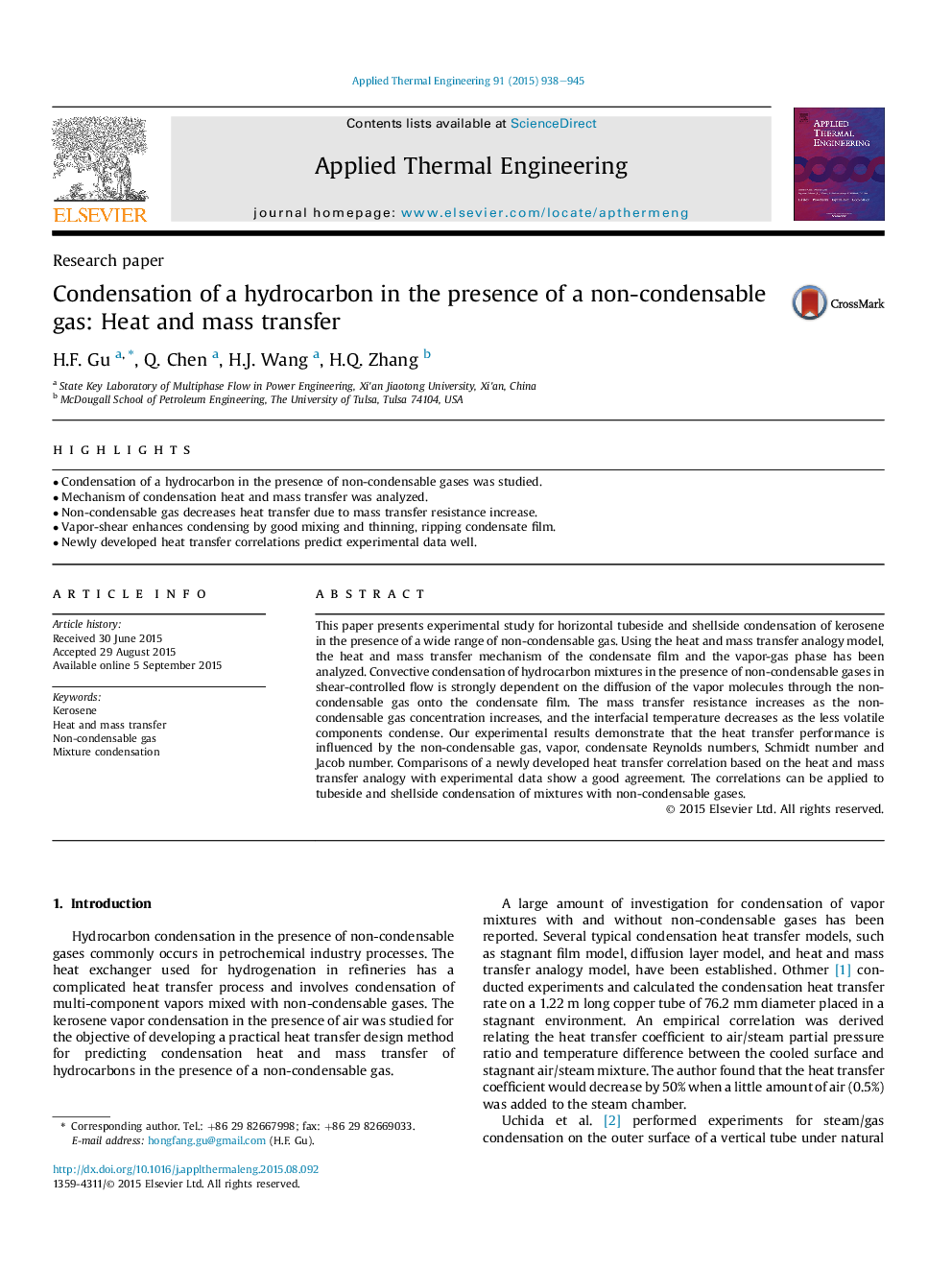| Article ID | Journal | Published Year | Pages | File Type |
|---|---|---|---|---|
| 645137 | Applied Thermal Engineering | 2015 | 8 Pages |
•Condensation of a hydrocarbon in the presence of non-condensable gases was studied.•Mechanism of condensation heat and mass transfer was analyzed.•Non-condensable gas decreases heat transfer due to mass transfer resistance increase.•Vapor-shear enhances condensing by good mixing and thinning, ripping condensate film.•Newly developed heat transfer correlations predict experimental data well.
This paper presents experimental study for horizontal tubeside and shellside condensation of kerosene in the presence of a wide range of non-condensable gas. Using the heat and mass transfer analogy model, the heat and mass transfer mechanism of the condensate film and the vapor-gas phase has been analyzed. Convective condensation of hydrocarbon mixtures in the presence of non-condensable gases in shear-controlled flow is strongly dependent on the diffusion of the vapor molecules through the non-condensable gas onto the condensate film. The mass transfer resistance increases as the non-condensable gas concentration increases, and the interfacial temperature decreases as the less volatile components condense. Our experimental results demonstrate that the heat transfer performance is influenced by the non-condensable gas, vapor, condensate Reynolds numbers, Schmidt number and Jacob number. Comparisons of a newly developed heat transfer correlation based on the heat and mass transfer analogy with experimental data show a good agreement. The correlations can be applied to tubeside and shellside condensation of mixtures with non-condensable gases.
